| July 21, 2008 |  |
MarsDaily Advertising Kit |
| Previous Issues | Jul 18 | Jul 17 | Jul 16 | Jul 15 | Jul 14 |
Phoenix Mars Lander Continues Tests With Rasp Pasadena CA (SPX) Jul 21, 2008
Pasadena CA (SPX) Jul 21, 2008The team operating NASA's Phoenix Mars Lander plans to tell the lander to do a second, larger test of using a motorized rasp to produce and gather shavings of frozen ground. The planned test is a preparation for putting a similar sample into one of Phoenix's laboratory ovens in coming days. The instrument with the oven, the Thermal and Evolved- Gas Analyzer, called TEGA, will be used ... more NASA Spacecraft Shows Diverse, Wet Environments On Ancient Mars  Washington DC (SPX) Jul 21, 2008
Washington DC (SPX) Jul 21, 2008Two studies based on data from NASA's Mars Reconnaissance Orbiter have revealed that the Red Planet once hosted vast lakes, flowing rivers and a variety of other wet environments that had the potential to support life. One study, published in the July 17 issue of Nature, shows that vast regions of the ancient highlands of Mars, which cover about half the planet, contain clay minerals, which ... more A Workday On Mars Is More Than 9-to-5:40  Dallas TX (SPX) Jul 21, 2008
Dallas TX (SPX) Jul 21, 2008The average day, or "sol," on Mars is 40 minutes longer than our 24-hour day on Earth. UT Dallas Physics Professor John Hoffman has spent more than 50 days on Martian time analyzing soil from the surface of the Red Planet. Hoffman, a member of the UT Dallas William B. Hanson Center for Space Sciences, designed a mass spectrometer system that analyzes gases from soil samples heated in eight ... more Spoting The Differences Between Alaska And Mars  Moffett Field CA (SPX) Jul 18, 2008
Moffett Field CA (SPX) Jul 18, 2008Little did Bucknell University geology professors Craig Kochel and Jeffrey Trop know as they were working in Alaska that they would soon predict one of the most important planetary observations ever made. The pair were in Alaska for an eight day trip in July 2006, studying geological features and the processes that create them. As they studied photographs taken of the surrounding area ... more Phoenix Mars Lander Delivers A 3D View Of Its Surrounds  Pasadena CA (JPL) Jul 18, 2008
Pasadena CA (JPL) Jul 18, 2008NASA's Phoenix Mars Mission has released stereo images of the Martian surface near the Phoenix lander. The images in the new 3-D Gallery combine views from the left and right "eyes" of the lander's Surface Stereo Imager (SSI) so that they appear three-dimensional when viewed through red-blue glasses. The first 14 images in the gallery were handpicked by Mark Lemmon, SSI lead scientist ... more |
mars-lab
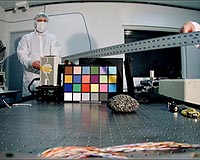 iss  mars-phoenix 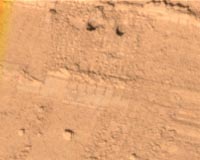 |
 Paris, France (ESA) Jul 17, 2008
Paris, France (ESA) Jul 17, 2008Scientists and engineers are preparing ESA's Mars Express for a pair of close fly-bys of the Martian moon Phobos. Passing within 100 km of the surface, Mars Express will conduct some of the most detailed investigations of the moon to date. The series of fly-bys will take place between 12 July and 3 August. During the second encounter, the spacecraft will fly within 273 km of the surface. ... more Ancient Mars Was A Diverse Complex World  Washington DC (SPX) Jul 17, 2008
Washington DC (SPX) Jul 17, 2008Two studies based on data from NASA's Mars Reconnaissance Orbiter have revealed that the Red Planet once hosted vast lakes, flowing rivers and a variety of other wet environments that had the potential to support life. One study, published in the July 17 issue of Nature, shows that vast regions of the ancient highlands of Mars, which cover about half the planet, contain clay minerals ... more Makemake -- or Easter bunny -- enters book of space names  Paris (AFP) July 15, 2008
Paris (AFP) July 15, 2008Pluto - downgraded two years ago to the status of a dwarf planet - has an exotically-named chum on the fringes of the Solar System. The Paris-based International Astronomical Union has decided to honour a Kuiper Belt object, 2005 FY9, with the name of Makemake, after the creator of humanity and the god of fertility in the Rapa Nui culture of Easter Island. ... more Phoenix Mars Lander Rasping At Frozen Layer  Tucson AZ (SPX) Jul 16, 2008
Tucson AZ (SPX) Jul 16, 2008A powered rasp on the back of the robotic arm scoop of NASA's Phoenix Mars Lander is being tested for the first time on Mars in gathering sample shavings of ice. The lander has used its arm in recent days to clear away loose soil from a subsurface layer of hard-frozen material and create a large enough area to use the motorized rasp in a trench informally named "Snow White." ... more |
mars-phoenix
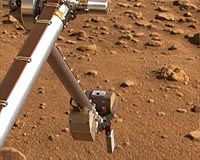 mars-general 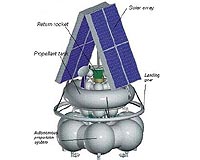 mars-mers 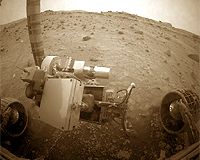 |
 Pasadena CA (JPL) Jul 15, 2008
Pasadena CA (JPL) Jul 15, 2008Opportunity has begun work on the much anticipated panorama of the layered promontory known as "Cape Verde" inside "Victoria Crater." The panorama will take several Martian days, or sols, to complete and will be made up of a mosaic of panoramic-camera images. The Cape Verde panorama is expected to be spectacular, "one for the textbooks." With each move closer to Cape Verde, power to Opport ... more Rover Takes Photos Of Scenic View  Pasadena CA (SPX) Jul 14, 2008
Pasadena CA (SPX) Jul 14, 2008Opportunity has completed work on the stand-off portion of the full-color panorama of the layered cliff known as "Cape Verde." It may take a couple of weeks for the entire panorama to arrive on Earth, depending on the volume of data the rover is able to transmit during communications links. Next, Opportunity will move closer to Cape Verde to take a high-resolution image of a smaller area ... more Spirit Biding Time  Pasadena CA (SPX) Jul 14, 2008
Pasadena CA (SPX) Jul 14, 2008Spirit continues to ride out the Martian winter by doing minimal activities to conserve power. The rover conducts very light science activities every three to four Martian days, or sols, and relays data to NASA's Odyssey orbiter for transmission to Earth every 4 sols. The rest of the time, Spirit mostly sleeps. As it has been some time since Spirit's operators were able to synchronize th ... more Unlocking Martian Rocks  Moffett Field CA (SPX) Jul 11, 2008
Moffett Field CA (SPX) Jul 11, 2008Signs of life on Mars may be hiding under its rocks, or perhaps hiding inside those rocks. A new study offers a simplified technique for detecting biological and pre-biotic molecules that become trapped inside minerals. Studying seven samples of the mineral jarosite collected from various places on Earth, a group of researchers was able to identify amino acids, the basic components of ... more
|
mars-phoenix
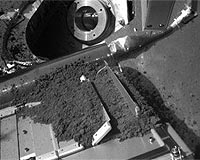 mars-phoenix 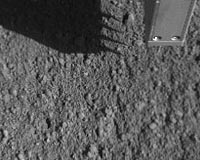 lunar 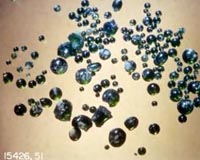 |
| Previous Issues | Jul 18 | Jul 17 | Jul 16 | Jul 15 | Jul 14 |
| The contents herein, unless otherwise known to be public domain, are Copyright 1995-2007 - SpaceDaily. AFP and UPI Wire Stories are copyright Agence France-Presse and United Press International. ESA Portal Reports are copyright European Space Agency. All NASA sourced material is public domain. Additional copyrights may apply in whole or part to other bona fide parties. Advertising does not imply endorsement, agreement or approval of any opinions, statements or information provided by SpaceDaily on any web page published or hosted by SpaceDaily. Privacy statement |